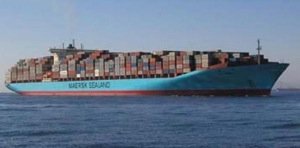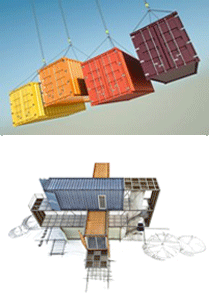- Home
- Building
- Transportation
- Dimensions
- Container Costs
- Used Containers
- 20 FOOT
- Book Store
- Container Sizes
- Companies
- Manufacturers
- Plans
- Drawings
- Used For Sale
- Projects
- Carriers
- Green House
- Benefits
- Construction
- Origins
- Design
- Specs
- Industry
- Refrigerated
- Cranes
- Open Tops
- Intermodal
- Insulated
- History
- Articles
- SCH Blog
- Contact us
- Submit your site
- Suggestions
- Privacy Policy
Standardized Shipping Containers History
The same metal standardized shipping containers taken off a ship from China at the Port of Los Angeles may be on its way to Las Vegas the next day on a railroad or truck flat bed. Standardization makes it possible for products to move internationally and intermodally from origination to destination.

Container standards have been designated by the International Standards Organization (ISO) since 1968 when standards regarding terminology, dimensions, ratings and international markings were approved. In 1970 further ISO standards were developed to designate specific corner fittings and the internal size of general purpose freight containers.
Standardization enables containers to carry their loads safely from ship or airplane to rail or truck and off- and on-loaded with uniform equipment and procedures worldwide saving time and money for the movement of virtually all goods sold.
There has been some form of standardization in shipping containers since the 1780s, according to the “Containerization” article in Wikipedia. With the invention of the railroad in the 1830s, coal began to be carried in wooden boxes via the rails and transferred to wagons and other conveyances. In the 1840s these coal boxes began to be made of iron and were transported by canal boat as well as by rail.
Size and material standardization became common within countries by the 1920s. In the UK the Railway Clearing House imposed some uniformity in shipping containers used throughout the British railway system.
In the 1920s through 1940s trains running between Milwaukee and Chicago carried containers from trucks and ships interchangeably. Another line began carrying box cars by ship between New York and Cuba, and many other railroads followed suit in using flatbed cars so that shipping containers could piggy-back on them.
Standardization became even more crucial in times of war. Special reusable containers became a standard during World War II to speed up loading and unloading of transport ships. The World War II "Transporter" was 8.5 feet long by 6.25 feet wide by 6.83 feet high.
Wooden crates were replaced by steel standardized shipping containers during the Korean War because they were less subject to damage and theft. Handling of steel containers was also found to be faster. The standard container became known as the CONEX (“Container Express”) in the 1950s and was used in the Korean War. By the Vietnam War the shipment times had been cut in half by using these standardized shipping containers. The U.S. Department of Defense dictated standards during the 1940s and 1950s.
Still, there were dozens of different sizes and corner fittings for containers world-wide until the ISO developed standards in 1968-70 when shipping container standards truly became worldwide.
